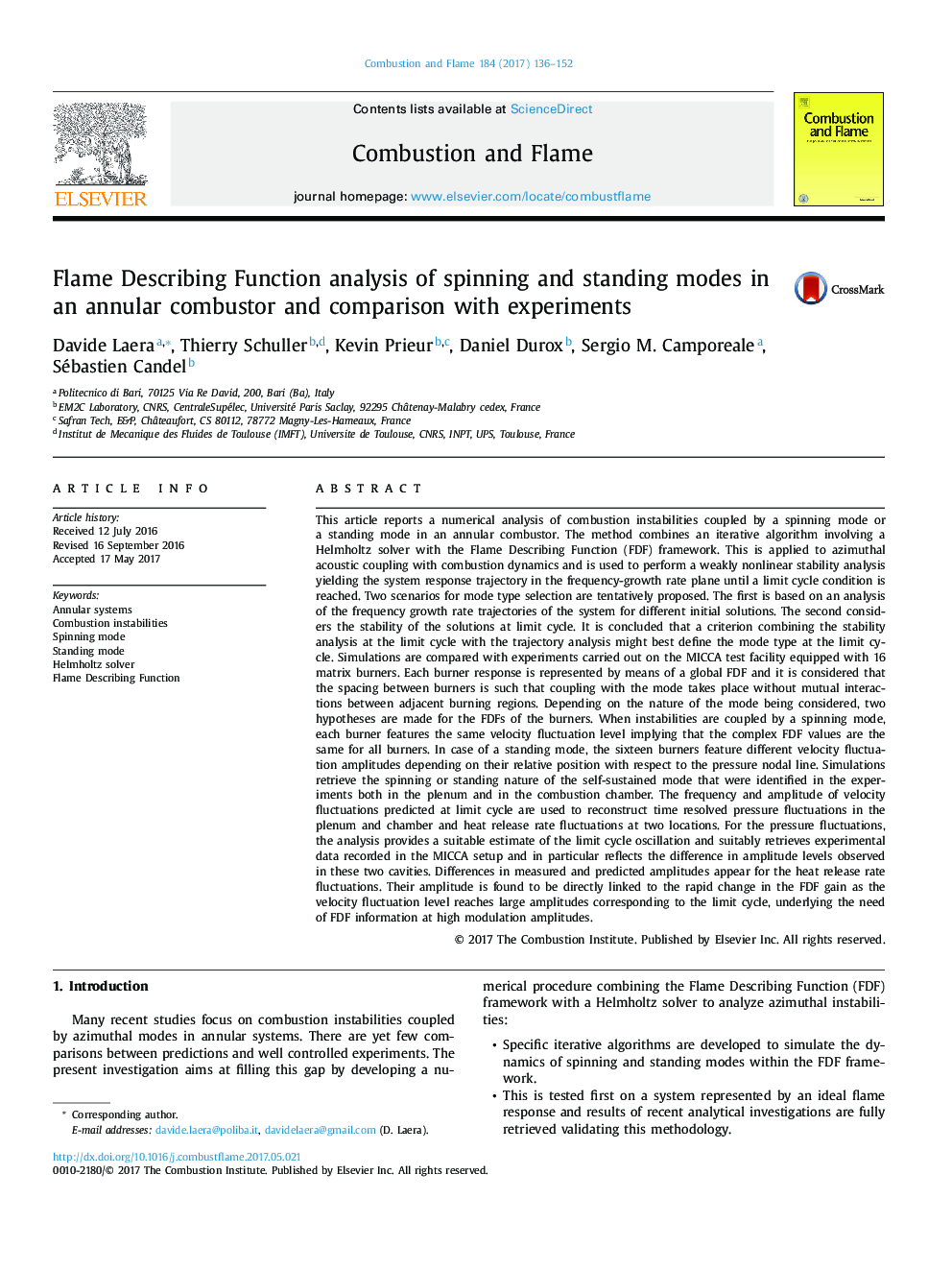| کد مقاله | کد نشریه | سال انتشار | مقاله انگلیسی | نسخه تمام متن |
|---|---|---|---|---|
| 4764453 | 1423553 | 2017 | 17 صفحه PDF | دانلود رایگان |
عنوان انگلیسی مقاله ISI
Flame Describing Function analysis of spinning and standing modes in an annular combustor and comparison with experiments
دانلود مقاله + سفارش ترجمه
دانلود مقاله ISI انگلیسی
رایگان برای ایرانیان
کلمات کلیدی
موضوعات مرتبط
مهندسی و علوم پایه
مهندسی شیمی
مهندسی شیمی (عمومی)
پیش نمایش صفحه اول مقاله

چکیده انگلیسی
This article reports a numerical analysis of combustion instabilities coupled by a spinning mode or a standing mode in an annular combustor. The method combines an iterative algorithm involving a Helmholtz solver with the Flame Describing Function (FDF) framework. This is applied to azimuthal acoustic coupling with combustion dynamics and is used to perform a weakly nonlinear stability analysis yielding the system response trajectory in the frequency-growth rate plane until a limit cycle condition is reached. Two scenarios for mode type selection are tentatively proposed. The first is based on an analysis of the frequency growth rate trajectories of the system for different initial solutions. The second considers the stability of the solutions at limit cycle. It is concluded that a criterion combining the stability analysis at the limit cycle with the trajectory analysis might best define the mode type at the limit cycle. Simulations are compared with experiments carried out on the MICCA test facility equipped with 16 matrix burners. Each burner response is represented by means of a global FDF and it is considered that the spacing between burners is such that coupling with the mode takes place without mutual interactions between adjacent burning regions. Depending on the nature of the mode being considered, two hypotheses are made for the FDFs of the burners. When instabilities are coupled by a spinning mode, each burner features the same velocity fluctuation level implying that the complex FDF values are the same for all burners. In case of a standing mode, the sixteen burners feature different velocity fluctuation amplitudes depending on their relative position with respect to the pressure nodal line. Simulations retrieve the spinning or standing nature of the self-sustained mode that were identified in the experiments both in the plenum and in the combustion chamber. The frequency and amplitude of velocity fluctuations predicted at limit cycle are used to reconstruct time resolved pressure fluctuations in the plenum and chamber and heat release rate fluctuations at two locations. For the pressure fluctuations, the analysis provides a suitable estimate of the limit cycle oscillation and suitably retrieves experimental data recorded in the MICCA setup and in particular reflects the difference in amplitude levels observed in these two cavities. Differences in measured and predicted amplitudes appear for the heat release rate fluctuations. Their amplitude is found to be directly linked to the rapid change in the FDF gain as the velocity fluctuation level reaches large amplitudes corresponding to the limit cycle, underlying the need of FDF information at high modulation amplitudes.
ناشر
Database: Elsevier - ScienceDirect (ساینس دایرکت)
Journal: Combustion and Flame - Volume 184, October 2017, Pages 136-152
Journal: Combustion and Flame - Volume 184, October 2017, Pages 136-152
نویسندگان
Davide Laera, Thierry Schuller, Kevin Prieur, Daniel Durox, Sergio M. Camporeale, Sébastien Candel,